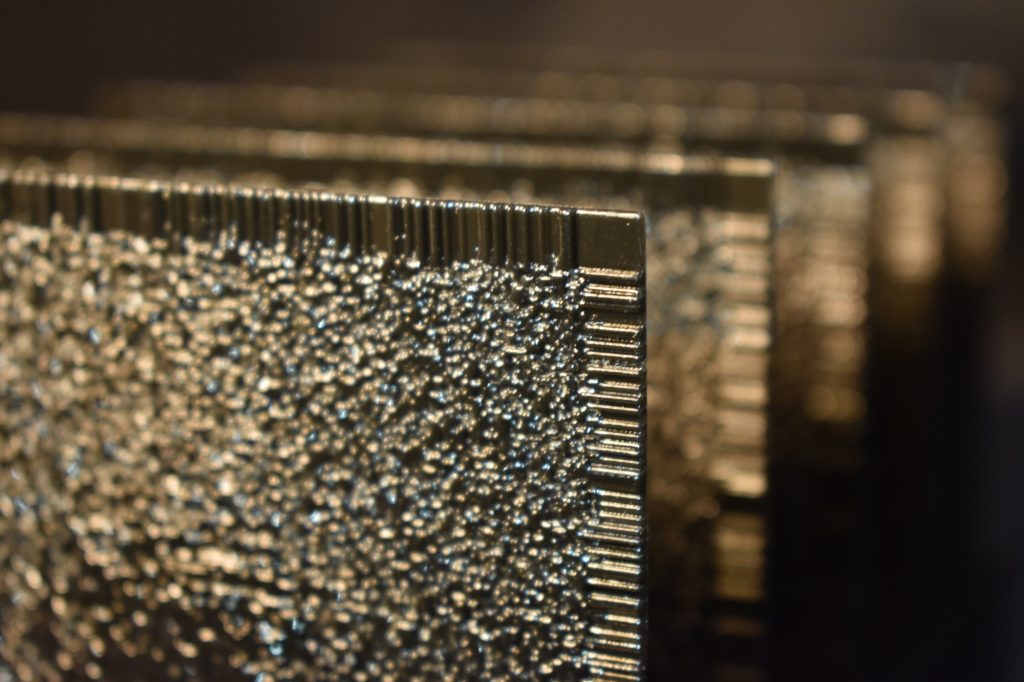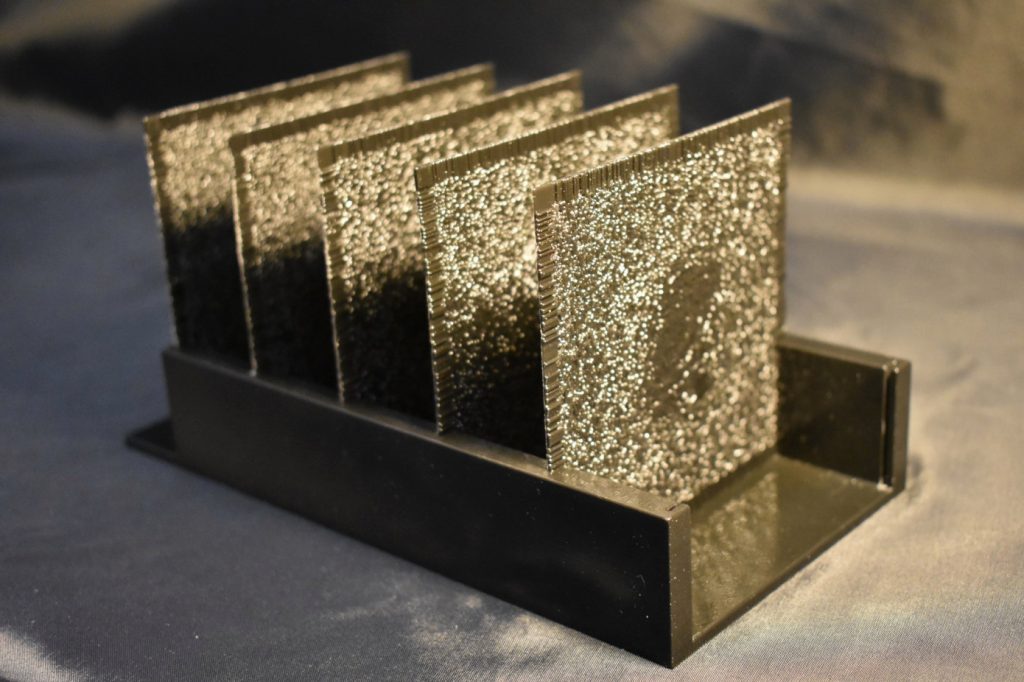We’ve got some exciting dental news to share first in today’s 3D Printing News Briefs – Stratasys just announced its new full-color dental 3D printer at LMT Lab Day. Moving on, Farsoon has been busy developing an advanced pure copper laser sintering process, and Aether is working with Procter & Gamble on a joint development project. DyeMansion has announced a new UK distributor for its products, and three researchers address the challenges of adopting additive manufacturing in a new book about best practices in the AM industry.
Stratasys Introduces Full-Color Dental 3D Printer
 This week at LMT Lab Day Chicago, the largest dental laboratory event in the US, Stratasys has introduced its new full-color, multi-material J720 Dental 3D printer which lets you have 500,000 color combinations for making very high resolution, patient-specific models. Its large build tray can print six materials at the same time, and it’s backed by GrabCAD Print software.
This week at LMT Lab Day Chicago, the largest dental laboratory event in the US, Stratasys has introduced its new full-color, multi-material J720 Dental 3D printer which lets you have 500,000 color combinations for making very high resolution, patient-specific models. Its large build tray can print six materials at the same time, and it’s backed by GrabCAD Print software.
“Labs today operate in a very competitive space where differentiation counts on mastering the digital workflow and expanding into new products and services. The J720 Dental 3D Printer is designed to change the game – allowing levels of speed, productivity and realism the market has never seen,” said Barry Diener, Dental Segment Sales Leader for Stratasys. “This powers laboratories to meet the demands of a competitive market and push the boundaries of digital dentistry.”
See the new J720 Dental 3D printer at LMT Lab Day Chicago today and tomorrow at Stratasys Booth A9. It’s expected to be available for purchase this May.
Farsoon 3D Printing Pure Copper
Two years ago, after Farsoon Technologies had introduced its metal laser sintering system, the company’s application team began working with industrial partners to develop an advanced 3D printing process that could additively produce components made of pure copper. Copper is a soft, ductile metal with both high electrical and thermal conductivity, and it’s often used in industries like shipbuilding, electronics, automotive, and aerospace. But most additive copper is based on alloys, and not the pure metal itself, which is hard for lasers to regularly and continuously melt and can cause problems like thermal cracking and interface failure.
That’s why Farsoon’s work is important – all of its metal laser sintering systems can successfully create cost-effective, high-quality pure copper parts. The company’s process and unique parametric design is able to meet custom needs of customers, and to date, it’s launched 13 process parameters for metal powder sintering, including pure copper. Some of the parts that have come out of Farsoon’s recent collaborations include a pure copper heat exchanger, which featured a 0.5 mm wall thickness, complex spiral geometry and was printed in a single piece. Farsoon is open for additional partners seeking to further develop the 3D printing of pure copper and other specialized materials.
Aether and Procter & Gamble Begin Joint Development Project
San Francisco 3D bioprinting startup Aether has entered into a two-year joint development agreement with Procter & Gamble (P&G) in order to develop 3D printing and artificial intelligence technologies. The two will use the multi-material, multi-tool Aether 1 3D printer as a technology creation platform, and will create several hardware and software capabilities that hope to automate and improve P&G’s product research applications and develop a next-generation Aether 3D printer. An interconnected network of computer vision and AI algorithms aims to increase automation for multi-tool and multi-material 3D printing, while high-performance cameras will enable new robotics capabilities. Aether is also working on additional software that will help P&G automate and speed up image processing.
“Aether is working with P&G to completely redefine 3D printing. It’s no longer going to be just about depositing a material or two in a specific pattern. We’re building something more like an intelligent robotic craftsman, able to perform highly complex tasks with many different tools, visually evaluate and correct its work throughout the fabrication process, and constantly learn how to improve,” said Aether CEO and Founder Ryan Franks.
DyeMansion Names New UK Distributor
 3D print finishing systems distributor DyeMansion, headquartered in Munich, announced that Cheshire-based 3D printing services supplier Europac3D will be the UK distributor for its range of machines. Per the agreement, Europac3D will now offer all of the AM finishing systems in DyeMansion’s Print-to-Product workflow, which includes its Powershot C powder blasting system, DM60 industrial coloring system, and the PowerShot S, which delivers homogeneous surface quality to 3D printed, powder-based plastics. Because of this, Europac3D is one step closer to achieving its mission of being a one-stop shop for 3D printing, scanning, and post-processing services.
3D print finishing systems distributor DyeMansion, headquartered in Munich, announced that Cheshire-based 3D printing services supplier Europac3D will be the UK distributor for its range of machines. Per the agreement, Europac3D will now offer all of the AM finishing systems in DyeMansion’s Print-to-Product workflow, which includes its Powershot C powder blasting system, DM60 industrial coloring system, and the PowerShot S, which delivers homogeneous surface quality to 3D printed, powder-based plastics. Because of this, Europac3D is one step closer to achieving its mission of being a one-stop shop for 3D printing, scanning, and post-processing services.
“DyeMansion’s post-production systems are worldclass and add the all important finish to additive manufacturing,” said John Beckett, the Managing Director of Europac3D. “Their systems are perfect for companies or 3D print bureaus that have multiple SLS or HP 3D printers and allow us to extend our offer by providing market leading additive manufacturing finishing systems for 3D-printed polymer parts.”
New 3D Printing ‘Best Practices’ Book
 We could go on and on about the many benefits offered by 3D printing (and we do), but there are still industry executives who remain unconvinced when it comes to adopting the technology. But a new book, titled “Additive Manufacturing Change Management: Best Practices” and released today, is here to provide some guidance for those still holding back. The book, which addresses some of the challenges of adopting 3D printing, was published by CRC Press as part of its Continuous Improvement Series and written by Dr. Elizabeth A. Cudney, an associate professor of engineering management and systems engineering at the Missouri University of Science and Technology, along with Divergent 3D’s VP of Additive Manufacturing Michael Kenworthy and Dr. David M. Dietrich, who is an Additive Manufacturing Engineering Design Fellow for Honeywell Aerospace and Dr. Cudney’s former doctoral student.
We could go on and on about the many benefits offered by 3D printing (and we do), but there are still industry executives who remain unconvinced when it comes to adopting the technology. But a new book, titled “Additive Manufacturing Change Management: Best Practices” and released today, is here to provide some guidance for those still holding back. The book, which addresses some of the challenges of adopting 3D printing, was published by CRC Press as part of its Continuous Improvement Series and written by Dr. Elizabeth A. Cudney, an associate professor of engineering management and systems engineering at the Missouri University of Science and Technology, along with Divergent 3D’s VP of Additive Manufacturing Michael Kenworthy and Dr. David M. Dietrich, who is an Additive Manufacturing Engineering Design Fellow for Honeywell Aerospace and Dr. Cudney’s former doctoral student.
Dr. Cudney said, “If company leaders are interested in bringing additive manufacturing online, this book can help them decide if it makes sense for their industry.
“There’s often a lack of planning, a lack of understanding, a resistance to change and sometimes fear of the unknown. Our hope is that this book will provide a good road map for managers to advance additive manufacturing at a faster pace.
“We wanted to take a look at how companies can roll out a new technology, new processes and equipment and integrate that in such a way that you have a good product in the end.”
In the 17-chapter book, the authors present what Dr. Cudney refers to as a ‘road map’ for business leaders looking to adopt 3D printing. The eBook format costs $52.16, but if you want that shiny new hardcover version, it will set you back $191.25.
Discuss these stories and other 3D printing topics at 3DPrintBoard.com or share your thoughts in the Facebook comments below.





